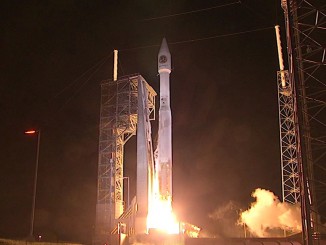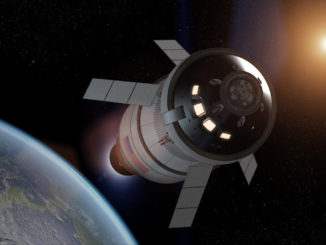VANDENBERG AIR FORCE BASE — The ever-dependable Delta 2 rocket continued its flawless service to NASA and Earth sciences today with the launch of a $916 million environmental probe focused on producing global maps of soil moisture from space.
“The SMAP project is absolutely thrilled to be catching a ride to space on the Delta 2 vehicle, a vehicle with a very long and well proven history,” said Kent Kellogg, the SMAP project manager.
Liftoff occurred at 6:22 a.m. local on the 52nd NASA mission to use the Delta 2.
“Delta 2 is the workhorse. That’s what we call it, and it has performed yet again,” said Tim Dunn, the NASA launch director.
Folded up origami-style to a neat 16-foot-tall package, the Soil Moisture Active Passive (SMAP) observatory was tucked aboard its medium-class launcher, which successfully flew for the 98th consecutive mission and 151st time overall.
“Water is fundamental to human life and SMAP will allow us to track how future water availability in different regions of the Earth will change,” said Kellogg.
“Soil moisture is the bank account of water in the land,” added Dara Entekhabi, SMAP science definition team lead.
“Being able to understand that in advance accurately and reliably will be invaluable for a number of different uses that will benefit everybody on the planet,” said Kellogg.
The first steps to spring to life came shortly after deployment from the rocket when the solar panels swung open to generate power.
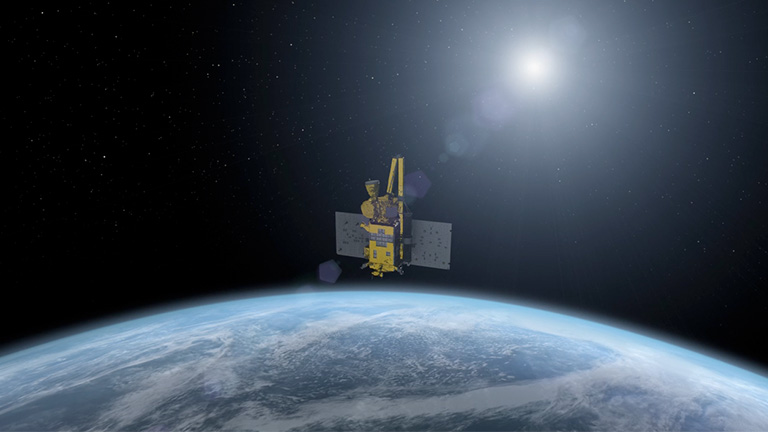
Coming up in the next several weeks, the marquee element of the scientific observatory will come online.
“We call it the spinning lasso,” said Wendy Edelstein of NASA’s Jet Propulsion Laboratory, Pasadena, California, the SMAP instrument manager. Like the cowboy’s lariat, the antenna is attached on one side to an arm with a crook in its elbow.”
SMAP is equipped with a 19.7-foot deployable gold, lightweight, rip-resistant mesh reflector antenna atop a boom structure that spins at 14.6 rpm (one complete rotation every four seconds) and measures the planet in swaths of 620 miles.
“It is the interesting part of the observatory, quite frankly,” said Kent Kellogg, SMAP project manager at the Jet Propulsion Laboratory.
Astro Aerospace, part of Northrop Grumman, builder of deployable structures and mechanisms for spaceflight produced the antenna reflector system for SMAP.
“The antenna caused us a lot of angst, no doubt about it,” Edelstein said. “We test, and we test, and we test some more. We have a very stable and robust system now.”
“They’ve built larger forms of these antennas,” Kellogg said. “They are very proud to tell you that they’ve never had a deployment failure in space. It’s a pretty elegant design and we have a lot of confidence.”
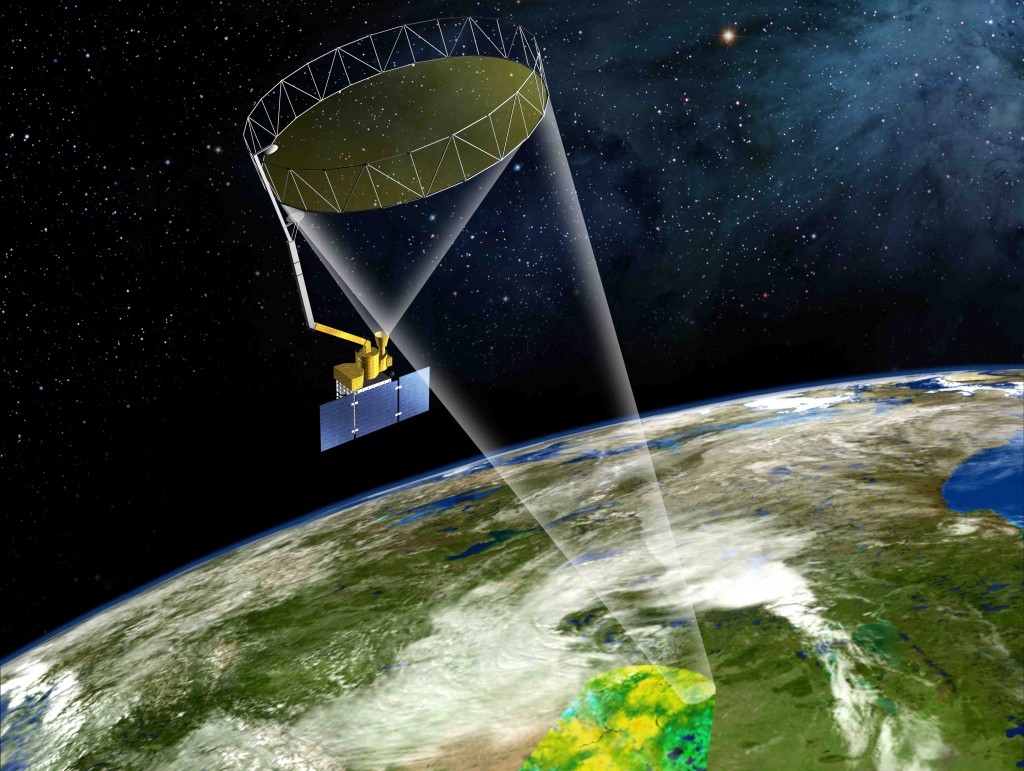
On Day 16, the boom supporting the antenna will be unstowed and extended into a “tail wagging the dog” configuration. It will take 16 minutes for the 16-foot arm to unfold and lock into place.
Next, on Day 20, after a few days of monitoring the spacecraft performance in the boom deploy configuration, the antenna itself will be unfurled like a camping chair in a 33-minute procedure.
The antenna is stowed in a 12-inch-diameter, four-foot-long package for launch. Initially, it is allowed to “bloom” outward to 7 feet in diameter before being driven by a motor and piano wire to a tight, full 20-foot expanse.
“We get those deployments done within three weeks of being in space, nominally,” Kellogg said.
About 50 days after launch the spin-up sequence begins. In between, the science instruments will be checked out and the science-gathering orbital altitude will be achieved.
The spinning initially goes to 4.5 rpm for a few days of testing before gradually stepping up to the nominal 14.6 rpm within 60 days of launch.
“We initially want to spin up to just about four-and-a-half rpm, this is a low spin rate. As we begin to spin up, the spacecraft actually counter-rotates in the opposite direction. This is by design, and is a feature of the fact that we’re trying to spin up a very large structure with a relatively small spacecraft. Once the antenna has reached a stable spin rate, the spacecraft attitude system will regain sun pointing very quickly and we continue on.” Kellogg said.
The 2,081-pound craft’s birth in orbit appears quite sporty, almost doubling in height, and there is risk, but Kellogg is confident.
“You might go look at one of those Mars entry, descent and landing animations and then come back and look at us. We will look pretty tame in comparison,” he said.
“This is one of these things, though, that your ability to test it on the ground simulating the effects of space, microgravity, is limited. So we recognize that.
“There’s always a risk with these complex deployable structures of some sort of snag event or something that is masked during ground testing. We think the risk of that is pretty low.”
“We have a lot of confidence that this mission is going to provide top-quality science data for many years in space,” Kellogg said.
“It’s an amazing mission. It’s amazing for science because by measuring real accurately soil moisture, it tells us about all of the three major cycles that make up our planet Earth — the water cycle, the energy cycle and the carbon cycle. So SMAP actually unifies Earth system science in one mission,” said Michael Freilich, director of the Earth Science Division of NASA’s Science Mission Directorate in Washington.
“But science on one hand and applications on the other hand. The measurements from SMAP actually are going to impact positively the lives of just about everybody on Earth because the understanding we get and the measurements we get of soil moisture from SMAP are going to make better weather forecasts regionally, they are going to help us monitor droughts and predict flood areas in short term predictions….SMAP is really going to be contributing to science and societal benefits. That’s the great thing about this mission.”
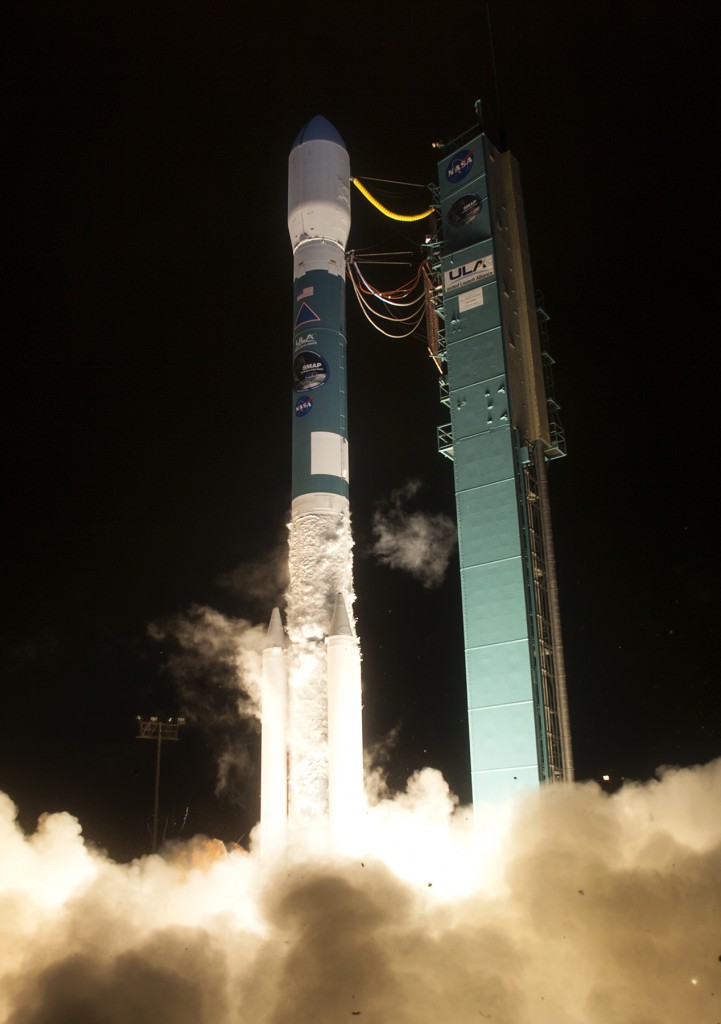
This was the 370th Delta rocket launch, the first of the year and United Launch Alliance’s 93rd mission. ULA plans three more Delta missions this year.
March 25 @ Cape Canaveral: The year’s first Global Positioning System replacement launch for the navigation network will occur using a Delta 4 rocket. The GPS 2F-9 bird will signal the final quarter of the Block 2F fleet to take flight.
June TBD @ Vandenberg: The National Reconnaissance Office will use a Delta 4 rocket to carry out the NROL-45 mission. The NRO is the secretive government agency responsible for flying the country’s spy satellites. This will be the first of two NRO launches from California in 2015.
July 21 @ Cape Canaveral: A familiar pairing of the Delta 4 rocket with the Wideband Global SATCOM communications satellite for the U.S. Air Force will take flight with WGS 7. The craft form the new military communications system to provide blanket coverage over virtually the entire planet for troops, ships, drones and civilian leaders.
The next Delta 2 launch will carry the JPSS 1 civilian weather satellite into polar orbit from Vandenberg in November 2016.
See our earlier SMAP coverage.
And see our Delta archive for further information.
ABOUT THE AUTHOR
Justin Ray has been a reporter with Spaceflight Now since the website’s inception in November 1999. The online news service, based at Cape Canaveral, has documented U.S. and international space news with a specialty of live launch coverage.
Prior to that, Justin worked for two years as an aerospace reporter at the Florida Today newspaper and its pioneering Space Online website. He began his career as an intern at Patrick Air Force Base’s public affairs office in 1996 and wrote for the Missileer base newspaper.
The Ohio native has covered 137 Delta rocket launches, 100 Atlas flights, 65 space shuttle missions and construction of the International Space Station, plus scientific spacecraft such as the Mars rovers and Cassini.
He attended college at the University of Central Florida and now resides in Satellite Beach, Florida.

